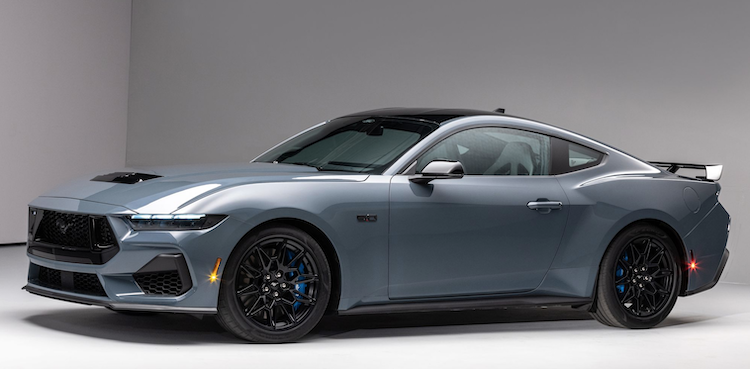What if someone gave you a Porsche 959, one the rarest and most important Porsches ever built? The German manufacturer’s first four-wheel drive car. A rocket ship that redefined the brand’s place in the automotive firmament. A vehicle so desirable influential American owners lobbied the federal government to change U.S. importation laws. Would you tear it down and rebuild it with modern materials and enhance its performance? Like Hell you would.
“Resto-modding” a 959 would be like tagging the Mona Lisa to make it modern art. Touch one hair on a 959’s metaphorical head and Porsche purists will have your guts for garters (as the Brits are wont to say). You could bring your restomod 959 to Porsche events – if you could put up with a constant chorus of “philistine!” from the purists and “dick move” from anyone other than a Lamborghini owner.

Modding the F out of the 959 would also be a sure-fire way to lose money. From from 1986 to 1993, Porsche made two hundred 959’s to satisfy FIA homologation and compete as a Group B rally car. (It didn’t. The Group B programme was cancelled in ’87.) And then made 92 more for S&G’s. Altering a 959 would destroy its resale value. (The unmolested 959 above is for sale at $1,975,479.)
What about restomodding fifty 959’s? If ever there was a good time to trot-out the expression “beyond the pale” this is it. And yet that’s Bruce Canepa’s plan. Before we look what he’s done to my song, ma, know this: Mr. Canepa is no stranger to the 959. He imported his very own uber-Porker in 1988 – two years after Microsoft founder Bill Gates stashed his 959.

Mr. Caepa started modifying his car to meet U.S. regs. Eleven years later, after tirelessly lobbying for the aforementioned Show & Display law, his beloved 959 became U.S. street legal (for 2500 miles per year).
In 2000, the veteran race car driver sold his first “Canepa 959.” Canepa Motors 959 chassis #002 (above) set a new standard. His third 959 is pretty much the same as it ever was – and no less shocking.
Whereas the original 959 left the factory with 444 horsepower from its 2.8-liter twin-turbo flat-six, the 959 SC by Canepa uses upgraded BorgWarner turbos with internal wastegate in a parallel twin-turbo system and new engine management based around MoTec hardware to nearly double that figure to 800 hp and 600 lb-ft of torque.
The 2.8-liter motor is torn apart and fitted with forged pistons, Pankl titanium connecting rods, and a billet crankshaft. The camshafts have been revised to offer improved low-end torque and mid-range power, and the valvetrain has been redesigned for better responses. Completely revised intake systems, equal-length exhaust headers coated in tungsten ceramic, and a two-stage exhaust system made from stainless steel and titanium.
carbuzz.com
But wait! There’s more! Here are a sampling of the rest of the “new” 959’s lowlights highlights:
- “Canepa updates it to the modern era with Penske custom-valved shocks within titanium coil springs. The brakes have also been upgraded to cryo-treated semi-floating rotors with upgraded pads, housed within lightweight 18-inch alloy wheels designed by Canepa.”
- ” . . . the entire car disassembled, the chassis gets acid-dipped and put on a rotisserie . . . color is one of Porsche’s own factory 150+ Paint-to-Sample color palettes or any color the client specifies.”
- “A handful of high-tech upgrades include LED lighting throughout, an exhaust valve switch, and Porsche’s new Classic Radio Navigation system onboard.”
Don’t get me wrong. Judging from Mr. Canepa’s racing pedigree and the quality of the work on display, his restomod 959’s kick some serious ass. They look like they’re up to modern supercar standards – as advertised. But at what cost?
The simple answer: a couple of million for the donor car and something with five zeros for Mr. Canepa’s compadres. The more important answer: each restomodded 959 costs a piece of automotive history.

I’ve sung the praises of restomodded Corvettes. I’ve offered a guide to buying a restomod. But the 959 SC (Sport Canepa) isn’t rescuing/recycling a relatively common old car destined for the scrapheap. It’s destroying a rare and important piece of automotive heritage in pursuit of perfection. As good as it is, the Canepa 959 SC’s success is its failure.



I’m not sure which, if any laws Mr. Canepa is breaking, but surely, just as he did, we collectively could lobby for a law change to prohibit such sacrilege. SMDH
I kind of dig it.
Especially when we tuck our original one away.
rienzireport.com
Pass a law so someone can’t modify their own car, notwithstanding that it still meets all state and federal vehicle laws? Where’s your sense of personal freedom? Would you have the same point of view if one of your freedoms were encroached upon? Of course, your answer is a resounding NO!
I’m guessing that the average pristine low mileage “original condition” 959 is parked in an environmentally stable domicile, often admired, rarely driven. I’m also guessing that these Cenepa modded 959SCs are relatively frequently used. What would be the point of making them so much more useable and then not to use them?
Regardless, it’s the owner’s right to modify and use his automotive property any way he or she wants, as long as no laws are violated.
Shame on you for thinking otherwise.
I didn’t say that a 959 owner doesn’t have a right to modify his or her car any damn way they want (unless it’s a ferrari, apparently). I said I don’t think this car should be modified. IMHO. That is all.
I don’t hate it. I would want to do the same. I would want to drive any car I own, and I would hate it if a newer super car was showing me tail lights.
There’s always a guy with a bigger you-know-what or a faster car. And with relatively cheap electric cars going from zero-to-sixty faster than you can read this sentence, I’m not sure we need to see on-road acceleration measuring contests as the be-all, end-all of a car’s place in the pecking order.
The point here: I believe cars of this historical significance should be preserved in their original state as best possible, out of respect for their heritage, if nothing else. As Rick S points out, owners have the absolute right to piss on that. But it doesn’t make it right.
The form factor of the vehicle is basically identical. If he didn’t tell you the engine had different internals and the turbos had billet wheels, you wouldn’t know the difference.
If I was doing a perfect resto on a C2 corvette, it would get bored and stroked with ported heads and roller valve train. Looking at it, you would never know.
Um, OK! But here’s the thing: the value of the car is not the form factor. It’s everything.
A preserved 959 represents a moment in time. Updating the technology, whether visible or not, means that the driver is not experiencing the car as it was when it was released. For collectors and true enthusiasts, anything less – or more! – is worthless, if not worthless.